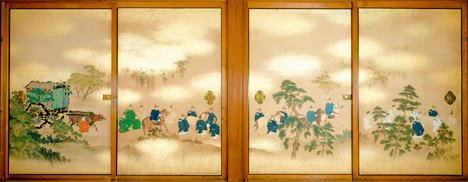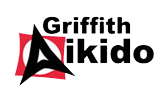Shukan News 14th Mar
Monday 14th March 2011
If you have any contribution for the Shukan News (story, photograph, video), please send it via email to gary@garyweigh.com
1. AGM at 8pm this Thursday evening 17th March
A final reminder that our AGM will be held at 8pm this coming Thursday evening 17th March, after an early finish to class. Remember that nominations for Management Committee positions close on Tuesday 15th March.
2. Safety Part 1 – safe practice during class
 As our Aikido school maintains its popularity, we continue to make our members aware of the rigid safety policies of our dojo. We practice a potentially dangerous art which has inherent risks. For this reason, it is paramount that we all make practice as safe as possible.
As our Aikido school maintains its popularity, we continue to make our members aware of the rigid safety policies of our dojo. We practice a potentially dangerous art which has inherent risks. For this reason, it is paramount that we all make practice as safe as possible.
Safety is one of the reasons for the strict discipline in every aikido dojo, including ours. Safety is the reason that you must follow Sensei’s instructions exactly and without question, and your actions should not deviate from those instructions.
Safety is one of the reasons that we practice cooperatively with each other and offer no resistance. Not only does it aid your learning, but as uke (the person receiving the technique), it is safer to go with the flow during a technique and roll out safely, than it is to resist.
Safety is not just the responsibility of the instructor in charge of the class. Safety is everyone’s responsibility. Once you enter the dojo, you must be aware and stay aware of what is going on around you. You must also accept personal responsibility to play your part in safe practice.
Here is a list of things you are expected to do to ensure safe practice of Aikido in a safe environment:
• When laying out the mats, it is important that there is a safety buffer zone around the outside of the mats. This area should be clear of all obstacles. This distance should be a minimum of one (1) meter of clear space around the edge of the mats. Any obstacles that can’t be removed must be protected in some way (e.g. cushioned)
• Any systemic obstacles and dangers on or near the mats should be brought to the instructor’s attention
• We come into close contact with the mat surface on a regular basis so it is important that the mats are vacuumed at least weekly to maintain them in as clean a condition as possible
• Spectators should be well clear of the mat
• Weapons should not be stored near edge of mat
• Weapons should not be laid on the mats or on the floor between the mats as they represent a danger if stepped on or rolled on
• All techniques that result in throws and pins should be directed to the outside of the mat at all times. The aim is to avoid collision
• Throws, pins and ukemi (defensive falling) practice performed by different groups should always be performed in the same direction. Falling backwards or rolling forwards in a direction that is different to another group creates a high risk of collision
• When practicing in pairs, the person performing the technique (nage) is responsible for the safety of the person receiving the technique (uke). Before throwing uke, nage must ensure there is sufficient empty mat area for uke to land safely
• When practicing in threes, nage is still responsible for the safety of uke however, the 3rd person represents an extra layer of protection by being vigilant and acting as lookout and protector
• When practicing in teams, a senior is usually nominated as the person in charge of each team and oversees practice within that team. Nage is still responsible for the safety of uke. Other members of the team not practicing a technique or awaiting their turn should remain aware of activity around them. They should be ready and able to move rapidly; and should not impede the practice or place themselves in danger
• At times, the instructor will restrict groups to different mat zones either verbally or with markers. It is your responsibility to ensure that you and every member of your group stays within your designated zone
• If you see any obstacle that looks like danger or any behaviour on the mat that appears inappropriate or dangerous or is inconsistent with the instructor’s instructions please do something about it. Remove the obstacle or in the case of inappropriate, dangerous or inconsistent behaviour, tell the instructor
Practicing Aikido (or not) is always your choice. At any time, you may sit out of an activity. Whether you are injured, feel unwell, or assess that an activity is beyond your present capability, you always have the right to choose.
Remember that in learning Aikido you are also learning the traditions and etiquette of Aikido. We therefore ask that you do not refuse to participate in traditional and etiquette-related activities such as bowing, respecting the rank of those senior to you and folding the hakama of an instructor. If you do that as an intermediate or senior, you are setting a very poor example for those coming behind you.
3. A piece of history
Sliding door panels of the Kyoto Imperial Palace – a past exhibition at the Kyoto National Museum
 The Kamo Festival, which has been held since the Heian period (794-1185), represents one of the oldest festivals in Kyoto. The festival was traditionally held in prayer for the abundant harvest of the five grains (rice, wheat, barley, millet, and beans). Although the festival was discontinued for about two hundred years after the Onin Rebellion (1467-1477), it was revived during the Edo period (1616-1867). Today, this event is known and cherished in Kyoto as the Aoi Matsuri (“Hollyhock Festival”).
The Kamo Festival, which has been held since the Heian period (794-1185), represents one of the oldest festivals in Kyoto. The festival was traditionally held in prayer for the abundant harvest of the five grains (rice, wheat, barley, millet, and beans). Although the festival was discontinued for about two hundred years after the Onin Rebellion (1467-1477), it was revived during the Edo period (1616-1867). Today, this event is known and cherished in Kyoto as the Aoi Matsuri (“Hollyhock Festival”).
This painting depicts the ceremonial procession from the Imperial Palace to the Lower and Upper Kamo Shrines. This traditional scene of the imperial ox cart, the envoy, and attendants conveys courtly culture of Kyoto. Komai Korei, the painter of this work, studied under Yoshimura Kokei (1769-1836), who was a pupil of Maruyama Okyo (1733-1795) and a painter of the Maruyama-Shijo school.
Courtesy of the Kyoto National Museum http://www.kyohaku.go.jp/eng/index.html
Aoi Mutsuri (Hollyhock Festival) in May 2010
4. Cheese and crackers for the soul
“The skillful traveler leaves no tracks; the skillful speaker makes no blunders; the skillful reckoner uses no tallies. He who knows how to shut uses no bolts–yet you cannot open. He who knows how to bind uses no cords–yet you cannot undo.” Lao Tzu
